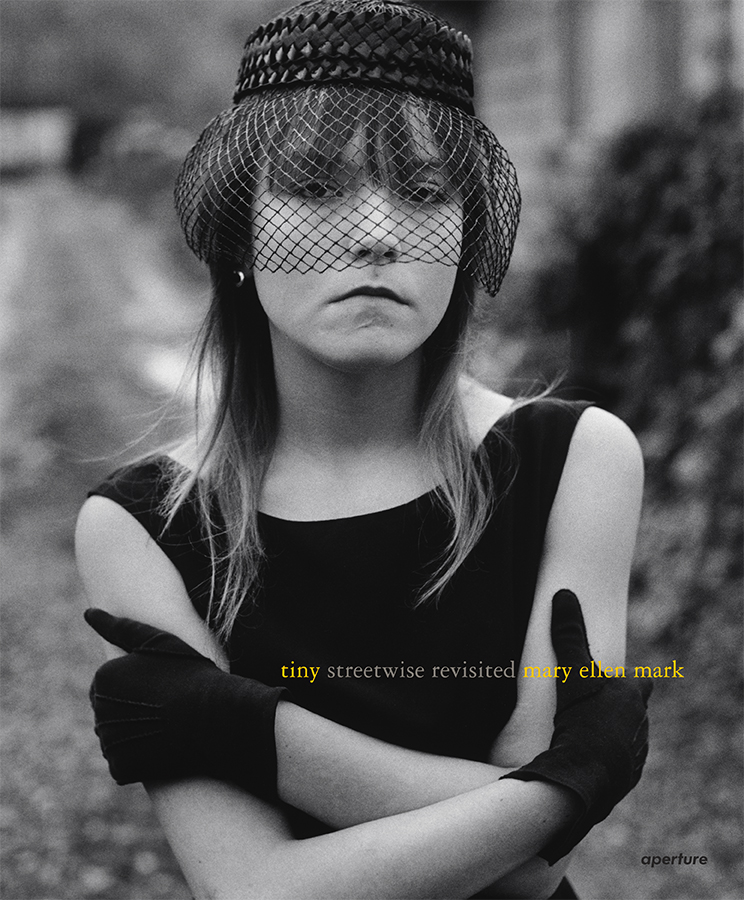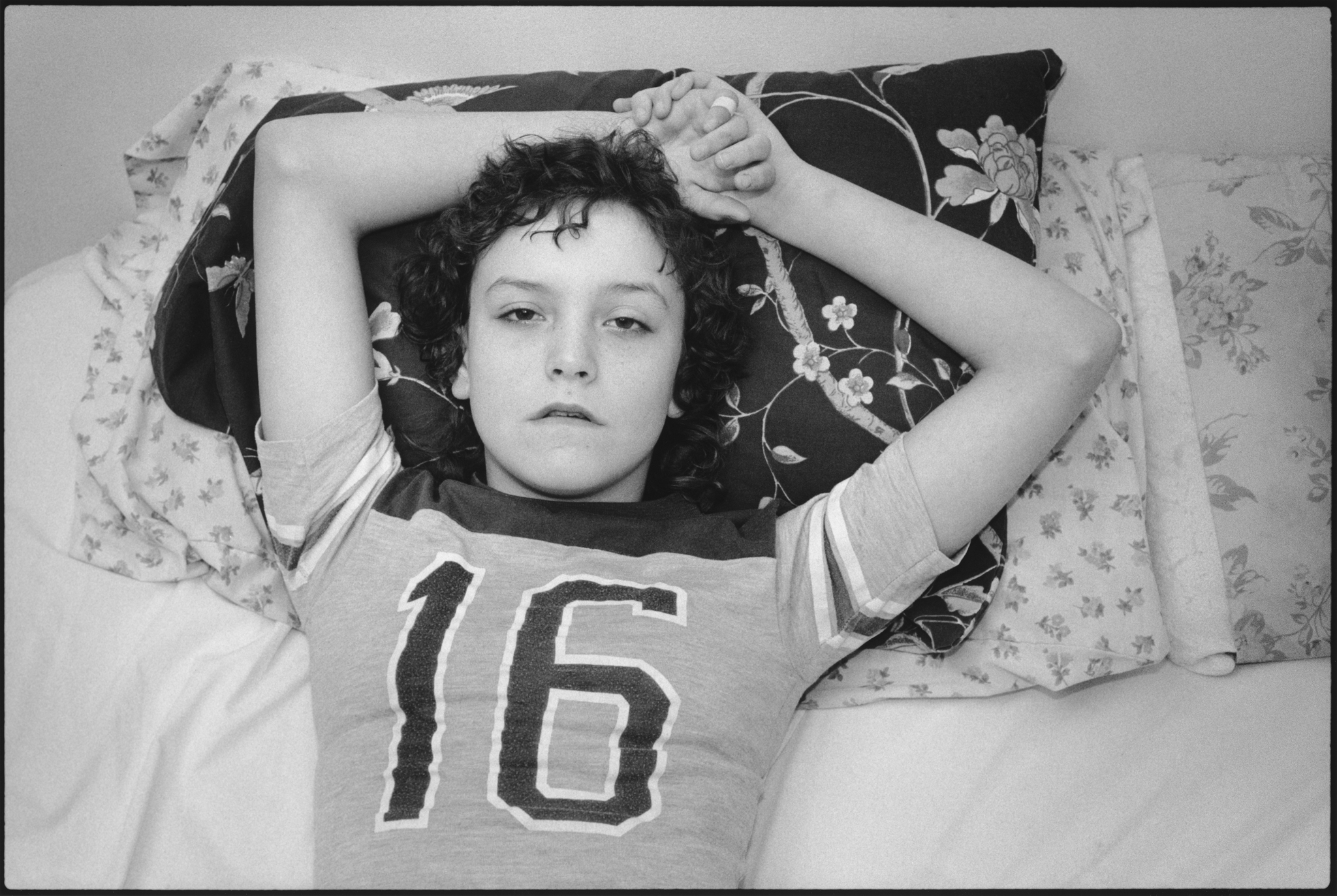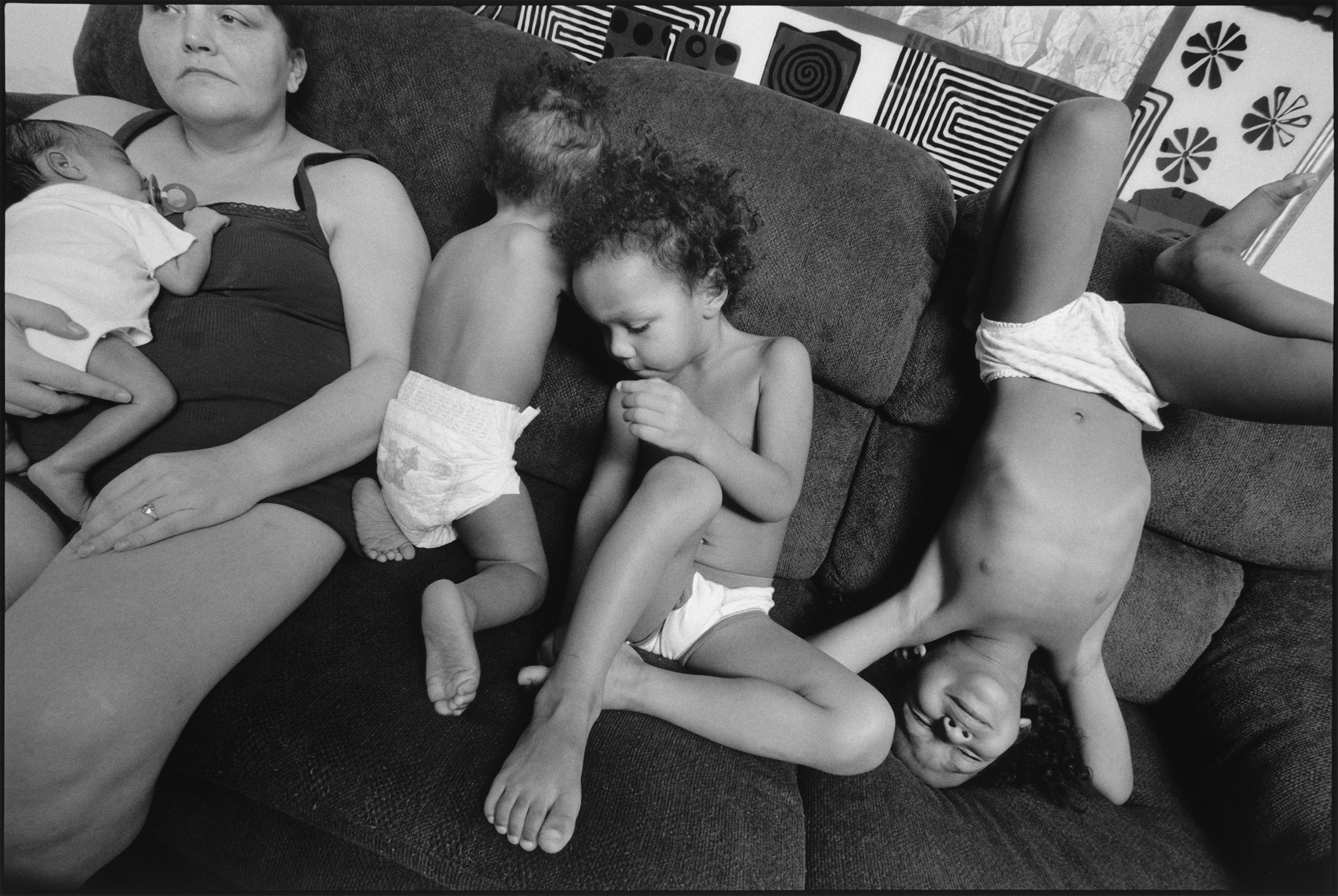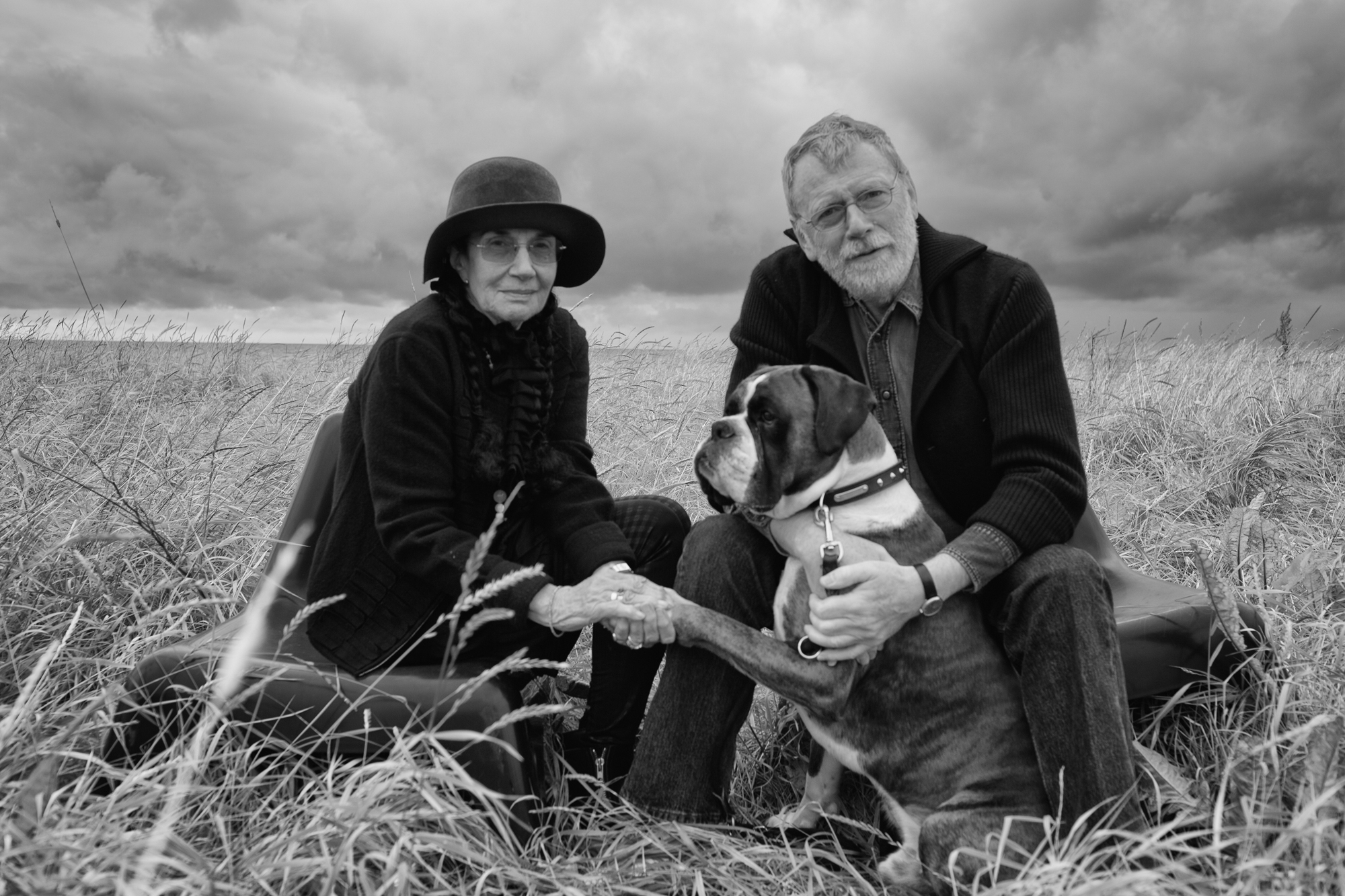Martin Bell
Photographer Mary Ellen Mark (1940–2015) and filmmaker Martin Bell, partners in life and work for 35 years, first met Erin Blackwell when she was a thirteen-year-old prostitute known as “Tiny” living on the streets of Seattle, Washington. Tiny became the central figure of Bell’s acclaimed 1984 documentary Streetwise and Mark’s 1988 book of the same name about homeless children surviving on the city’s streets.
Mark and Bell’s enduring friendship and creative collaboration with Blackwell has spanned three decades and several projects. Now in her mid-40s, Blackwell is the subject of Mark’s latest photobook and a forthcoming film by Bell. Mark’s book Tiny: Streetwise Revisited (2015), the photographer’s last before her passing in May, was recently published by Aperture, and Bell’s upcoming film Tiny: The Life of Erin Blackwell will be released in 2016.
Martin Bell speaks to ICP about the experience of making Streetwise (1984), the evolution of his and Mary Ellen Mark’s collaborations, and their lasting relationship with Erin “Tiny” Blackwell.

Marina Chao: Can we start with some background about the Streetwise project? Your 1984 film came out of a 1983 Life magazine feature on children living on the streets in Seattle that Mary Ellen photographed. What about that story compelled you to return to the children and make a film about them? I’ve read that Mary Ellen came back from that assignment and felt strongly that a film should be made. Were you convinced from the outset? How did it all come together?
Martin Bell: Mary Ellen and I had been looking for a project to work on together. Life magazine assigned Mary Ellen to photograph kids living on the streets of Seattle. Seattle was chosen because at that time it was considered to be the most livable city in America.
On her first night in Seattle Mary Ellen called to say she’d met a 13-year-old girl named Tiny in the parking lot of the Monastery nightclub—she was beautiful and working as a prostitute—and then added, “This could be our film project.”
Fate had brought Mary Ellen and Tiny together. That chance meeting changed all of our lives. After Mary Ellen and Cheryl McCall (the reporter) finished the story “Streets of the Lost” for Life we started to plan how to make the film.
Cheryl had recently completed an assignment for Life magazine on Willie and Connie Nelson. Cheryl told Connie about Tiny and asked if they would be interested in helping finance a film project about her and the other street kids in Seattle. They generously gave enough money to start making the film.
What were you setting out to do with Streetwise? It seems with this kind of documentary project the inherent value of the storytelling can run parallel to a kind of call-to-arms message, without that necessarily being the filmmakers’ intent. Did you think or hope that what you were doing would help change these kids’ situations?
Though the film shows some of the children with their social workers, did the success of the film translate, as far as you know, into any increased advocacy for runaways or neglected children? Or help mend relationships between the kids at their parents? Were you and Mary Ellen tempted to help the children directly?
The idea of the film was to give a voice to these disenfranchised teenagers to allow the audience to enter the world of these kids and give them a sense of what it takes to survive on the street.
The relationship Mary Ellen and Cheryl had forged a few months earlier was immediately clear. From the first day of filming, September 5th 1983, to the last, October 31st (Halloween), we witnessed the lives of the films main characters. It was a side of life I had never experienced before. It was raw and often unimaginably brutal.
I hoped that by empowering these kids and if we got the film right it might motivate others who have the power to make political and social change happen.
By sharing their experiences in the film it enabled many people around the world to see what a tragic waste of these young lives looked like. We’ve heard from fans of the film that it inspired them to volunteer at a shelter, pursue a career in social work, or just let them know that they weren’t alone if they were having trouble at home. Mary Ellen and I offered Tiny the chance to come live with us in NY. (She rejected our one condition that she go to school and decided to stay in Seattle.)

I suppose there’s always this thin line between telling a difficult story honestly and getting involved emotionally. How do you approach that challenge? How important is it for you to maintain a professional distance? How important is it for the film?
For me making a film is both an emotional and technical process—it’s what makes the film work. It is a balancing act between the underlying story ideas and the feelings I have towards what I see and how best to capture that.
In the making of Streetwise we saw young teens getting into cars with customers; so did the police. We both watched this daily action, knowing it was wrong, but unable to change, in any meaningful way, the reality of this self-destructive life.
The sex trade is what these kids did every day to survive on the street. I filmed the transactions with the customers, captured license plates of cars but never intervened. I was there to make a film, to report what was happening. The law and social workers were there to deal with the complexities of this extreme breakdown in family life. When you know the young teenager getting into the car to earn a buck for a blow-job it is hard to reconcile. What if this was my child? It is one of the challenges of recording actual events. No one comes away from witnessing or participating in this behavior looking good—it is a complete failure of all that is right and just.
MC: How did the kids in Streetwise react to you? How did they feel initially about being filmed and speaking openly on camera about their lives? And how did they react to seeing the completed film?
The first evening we filmed at the Dismas Center, New Horizons Ministries on 2nd Avenue, a center providing help for the kids. I had focused my camera on one young woman who later that evening objected to being filmed. Before she had finished telling me “no,” I had opened the film camera’s magazine and given the roll of exposed film to this young woman. Everyone in the room saw what I did. I continued filming other kids. No one else objected after witnessing that exchange.
We recorded hours of audio interviews with the kids. These recordings became the voice-over dialog for the film. The honesty of the interviews is an indication of the kind of relationship we built.
When the Streetwise film was complete we travelled back to Seattle for the film’s first public screening with the kids of Pike Street. We set up a 16mm projector and screen in the Dismas center. The kids sat on the floor—the room went dark—the film started to play. After Rat jumps from the bridge at the opening of the film, the kids went wild laughing and talking among themselves as each of the street characters is introduced, but as the film’s story unfolded the room became very quiet.
In the funeral parlor, at the end of the film, we see Dewayne in his coffin. Next to him his father handcuffed to a prison guard, talks to his dead son. In the room there was silence. No one from Pike Street was at his funeral.
The film ends with Tom Waits singing “Take Care of all my Children.” The kids sat silently as their names ran over the end credits. The film ended and the kids drifted out of the Dismas center into the night. One kid came up to me in the street afterwards and said, “I want to hit someone but I don’t know who to hit.” After all these years I feel the same way.

It’s heartbreaking, the things these young people had to go through, and then they relate very difficult experiences so matter-of-factly, with such composure. What did you make of their capacity to speak so honestly about drugs, prostitution, abuse, and homelessness? Was it bravery, bravado, or maturity (if is that really possible at 13 or 14, even with an abundance of independence)?
I believe the main characters speak openly about their street experience because we were interested in them and what they had to say. They talked freely about what compelled them to leave home and what little they had to show after spending years on the streets servicing the desires of their downtown clients.
Leaving home was a brave act--they stepped into the unknown – how many of us have the guts to do that? No one offered a helping hand or an alternative to a life that, with few exceptions, was surely going to end badly.
The decision taken by Erin, a spirited thirteen-year-old girl, to leave a dysfunctional home life for a life on the street, was bold. She said, “it was fun and it was free. I can do what I want—made a lot of money—got to spend it on whatever I wanted.” She felt it would lead to independence—having some control over her life.
Her leaving home was a Hail Mary pass at grabbing control of her life. You would have to be in her shoes to pass judgment on that decision.
Why was it important to you and Mary Ellen to make Tiny: Streetwise Revisited and Tiny: The Life of Erin Blackwell? What did you want people to know about the adult Erin, now a mother of ten? What did she want us to know about how the street kid Tiny grew up?

Mary Ellen and I started to make Tiny: The Life of Erin Blackwell film in January 2014. The idea was to incorporate all of our 32 years of work into one film and have it completed to coincide with the publication of Mary Ellen’s book Tiny: Streetwise Revisited (also a forthcoming traveling exhibition).
It’s been 32 years since Mary Ellen and I walked into Tiny’s life. Each time we travel back to Seattle to work with her we just pick up where we left of as if time had not passed. We are accepted– cameras and all. The relationship between Mary Ellen and Tiny, as you will see in the new film, is one of free ranging honesty. The candor is as disarming now as it has always been.
Both Mary Ellen and I believe in stories that are made in one place and span enough time to see the changes take place. It brings perspective and depth. I believe the unfolding story of Tiny’s life is an important one because of how she sees and tells her life story and how that relates to our own lives. Equally important is what lies in the future for her ten children.
And the other surviving children from Streetwise: were they difficult to catch up with? Were they enthusiastic about the new film? Was there any apprehension about revisiting their difficult childhoods?
Mary Ellen and I tracked down five of the street-kids from the Streetwise film and interviewed them. Their stories will eventually be included on www.tinythefilm.com. This site will also include the screening dates for the movie.
You and Mary Ellen were partners in life and work. You were with her on all of her shoots and vice-versa, is that right? And both Streetwise and Tiny: The Life of Erin Blackwell [as well as the shorts Twins (2004) and Prom (2010)] are film and photobook collaborations. Why was it important for you two to do both projects—film and photobook—together? How do you think one tell a story differently from the other; how do the two perspectives complement and enrich each other?
Mary Ellen and I worked together from the very start of our relationship in 1980. It was wonderful for me to be able to share ideas with someone so brilliant. She had a formidable capacity for work and an intuitive instinct for a story. I never met anyone else who could connect with people better than Mary Ellen, no matter who they were or where they came from.
Taking photographs and making films is an aggressive process but Mary Ellen made it seem a natural way of being—effortless. She was totally honest and would not take bullshit from anyone. Her connection with total strangers came from a genuine interest in them. She listened carefully and remembered everything: the names of their children, when and where they were born, even the names of their pets, things she would readily bring into a conversation many years later.
Making the photographs and films together was above all a great way of pooling different and at times conflicting ideas. Making photographs and films are two entirely different ways of thinking, but out of our collaboration something extra was added to each other’s work. For me living and working with Mary Ellen was a beautiful gift in my life.
What’s next? Can you share what you’re working on now? Is there a dream or passion project waiting to be tackled?
Mary Ellen and I have been working with the novelist John Irving on a fiction film project since 1989. It started in India based on Mary Ellen’s work for her book Indian Circus (1993) and a film we made for National Geographic, Circus of Dreams.
John went on to write his novel A Son of the Circus (1994) as well as a screenplay of the same name. The novel was successful, but the fiction film never went into production. As the years rolled by the story migrated from India to Mexico and now beyond Mexico. John’s new novel, Avenue of Mysteries, will be published in November 2015.
This Irving collaboration will be the next passion project to be tackled after Tiny: The Life of Erin Blackwell is released.
And, finally, for those of us who weren’t fortunate enough to have known Mary Ellen, is there a story you can share that would help us understand who she was? A moment you can recall that just makes you think, that was Mary Ellen.
Over the 35 years we were together I would ask Mary Ellen, while she was working, if she had just captured a good frame. She always replied she didn’t know.
Even when she was editing her contact sheets I’d ask, “did you get anything?” She always replied she wasn’t sure.
After Mary Ellen had finished the edit I’d look at the marked sheets and often see, next to a red dot she’d used to mark a select, a very distinctive Mary Ellen frame and wonder why she could not see how truly exceptional she was and say, “Well maybe just one.” For her there was only the next story and another chance to find the elusive iconic frame. That was Mary Ellen.
I wish I had Mary Ellen’s gift to see the moment and make it into a single beautiful frame that will remain true for the rest of time.









